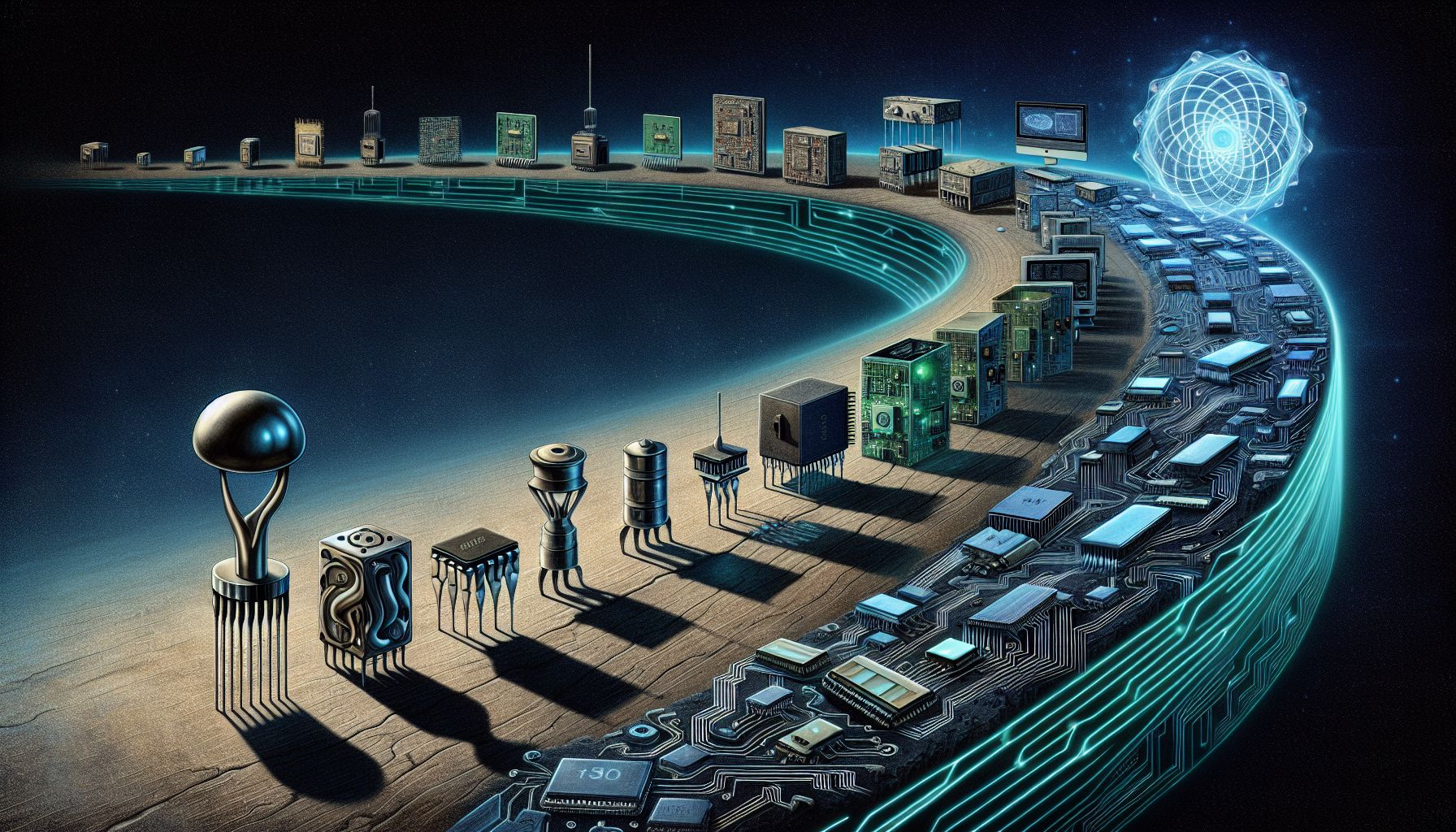📌 Let’s explore the topic in depth and see what insights we can uncover.
⚡ “Imagine a world where computers are a billion times faster than they are today! Welcome to the fascinating journey of how we’re speeding up from tiny transistors to quantum computers.”
If you’ve ever wondered about the magic behind your computer screen, you’re not alone. Computer engineering is an intricate dance of science, technology, and innovation that has shaped our world in ways unimaginable just a few decades ago. From the humble transistor, the backbone of all modern electronics, to the awe-inspiring potential of quantum computing, the story of computer engineering is a fascinating journey through time and technology. In this blog post, we will dive into the captivating evolution of computer engineering, exploring how it started, where it is now, and where it might take us in the future. We will also shed light on the key milestones and innovations that have transformed this field and, by extension, our lives. So buckle up, and get ready for a thrilling ride through the landscape of computer engineering!
🧱 The Building Block: The Transistor

Tracing the Quantum Leap in Computer Engineering
Imagine trying to build a skyscraper using only bricks and mortar. That’s essentially what early computer engineers were up against. They had a vision of powerful, efficient computers, but the tools at their disposal were rudimentary at best. That all changed in 1947 with the invention of the transistor. A transistor, in simple terms, is a tiny switch that controls the flow of electricity. It might not sound like much, but its impact was earth-shattering. Transistors were smaller, faster, and more energy-efficient than the vacuum tubes that were used in computers at the time. They paved the way for the development of more complex circuits and, ultimately, the modern computer.
💻 The Digital Revolution: The Microprocessor
Fast forward a couple of decades to 1971, and the next landmark in our journey arrives: the microprocessor. This miniaturized central processing unit, or CPU, brought the power of a computer onto a single chip. Intel’s 4004 microprocessor, the world’s first, was less powerful than today’s pocket calculator but it launched the digital revolution. The invention of the microprocessor marked the beginning of the personal computing era. Suddenly, computers weren’t just for governments and big corporations anymore. They were becoming accessible and affordable for everyday people. This democratization of technology led to an explosion of innovation and creativity, paving the way for everything from video games to the Internet.
🌐 The Information Superhighway: The Internet
The rise of personal computers was a game-changer, but it was the advent of the Internet that truly transformed our world. The Internet started as a U.S. military project in the 1960s, but it didn’t become a household name until the 1990s. With the Internet, computers were no longer isolated machines. They became interconnected nodes in a vast global network, able to share and exchange information at the speed of light. This opened up a whole new world of possibilities, from e-commerce and social media to cloud computing and big data.
🧠 The Next Frontier: Artificial Intelligence
If the transistor was the seed from which modern computing sprouted, artificial intelligence (AI) is the fruit that it has borne. AI is the science and engineering of making computers behave in ways that, until recently, we thought required human intelligence. Today, AI is everywhere: it powers your smartphone’s voice assistant, recommends movies on Netflix, and even helps doctors diagnose diseases. AI is not just a technological marvel; it’s a tool that’s shaping our society in profound and often unexpected ways.
🧪 The Quantum Leap: Quantum Computing
And now, we arrive at the cutting edge of computer engineering: quantum computing. Quantum computers use the principles of quantum mechanics to process information in ways that classical computers cannot. They promise to solve complex problems faster and more efficiently than even the most powerful supercomputers of today. Quantum computing is still in its infancy, with many technical and practical challenges to overcome. But its potential is enormous. From drug discovery and climate modeling to cryptography and machine learning, quantum computing could revolutionize a multitude of fields.
🧭 Conclusion
From the humble transistor to the dizzying heights of quantum computing, the evolution of computer engineering is a testament to human ingenuity and perseverance. Each leap forward has brought new opportunities, new challenges, and new ways of seeing and shaping our world. The journey is far from over, though. As we stand on the brink of the quantum age, we can only imagine what the future of computer engineering will bring. But one thing is certain: it will continue to surprise, inspire, and captivate us, just as it has done since the dawn of the transistor.
📡 The future is unfolding — don’t miss what’s next!
